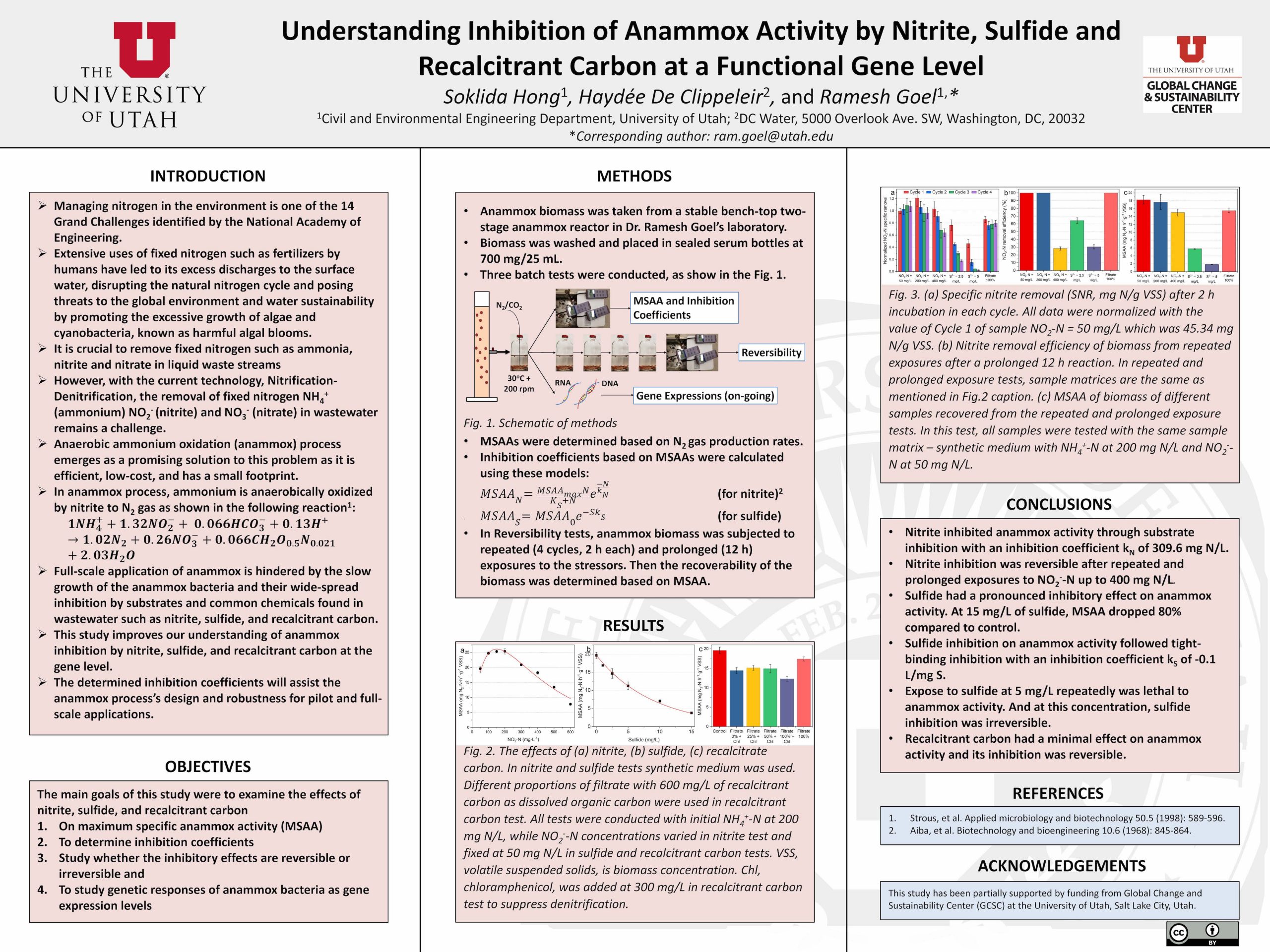Understanding Inhibition of Anammox Activity by Nitrite, Sulfide and Recalcitrant Carbons at a Functional Gene Level
-Soklida Hong, Haydée De Clippeleir, Ramesh Goel
[bs_collapse id=”collapse_998e-dacc”]
[bs_citem title=”Bio” id=”citem_bc2d-4c29″ parent=”collapse_998e-dacc”]
I am Soklida Hong from Cambodia. I am a PhD student in the Department of Civil & Environmental Engineering at the University of Utah. My advisor is Dr. Ramesh Goel. My research is on wastewater treatment mainly focuses on removal of nitrogen using Anammox process.[/bs_citem]
[bs_citem title=”Abstract” id=”citem_abdb-05c5″ parent=”collapse_998e-dacc”]
Extensive uses of fixed nitrogen, such as fertilizers, lead to an excessive discharge of the compounds to the surface water posing threats to the global environment and water sustainability by causing eutrophication, dissolved oxygen depletion, and formation of cyanotoxins threatening other aquatic organisms and contaminating the drinking water supply. Anaerobic ammonium oxidation (Anammox) has emerged as a robust process for nitrogen removal in liquid waste streams. Anammox effectively removes fixed nitrogen with more energy-efficient and economical than the conventional nitrification-denitrification process. However, Anammox bacteria are known for their slow growth and widespread inhibition by numerous factors, including various chemicals commonly found in wastewater. This study determined inhibition coefficients and examined the mechanisms of the inhibition of Anammox by nitrite, sulfide, and recalcitrant carbons at the gene level. Findings from this study will improve our understanding of the inhibition of anammox for troubleshooting and a better design of the anammox process.
[/bs_citem]
[/bs_collapse]

